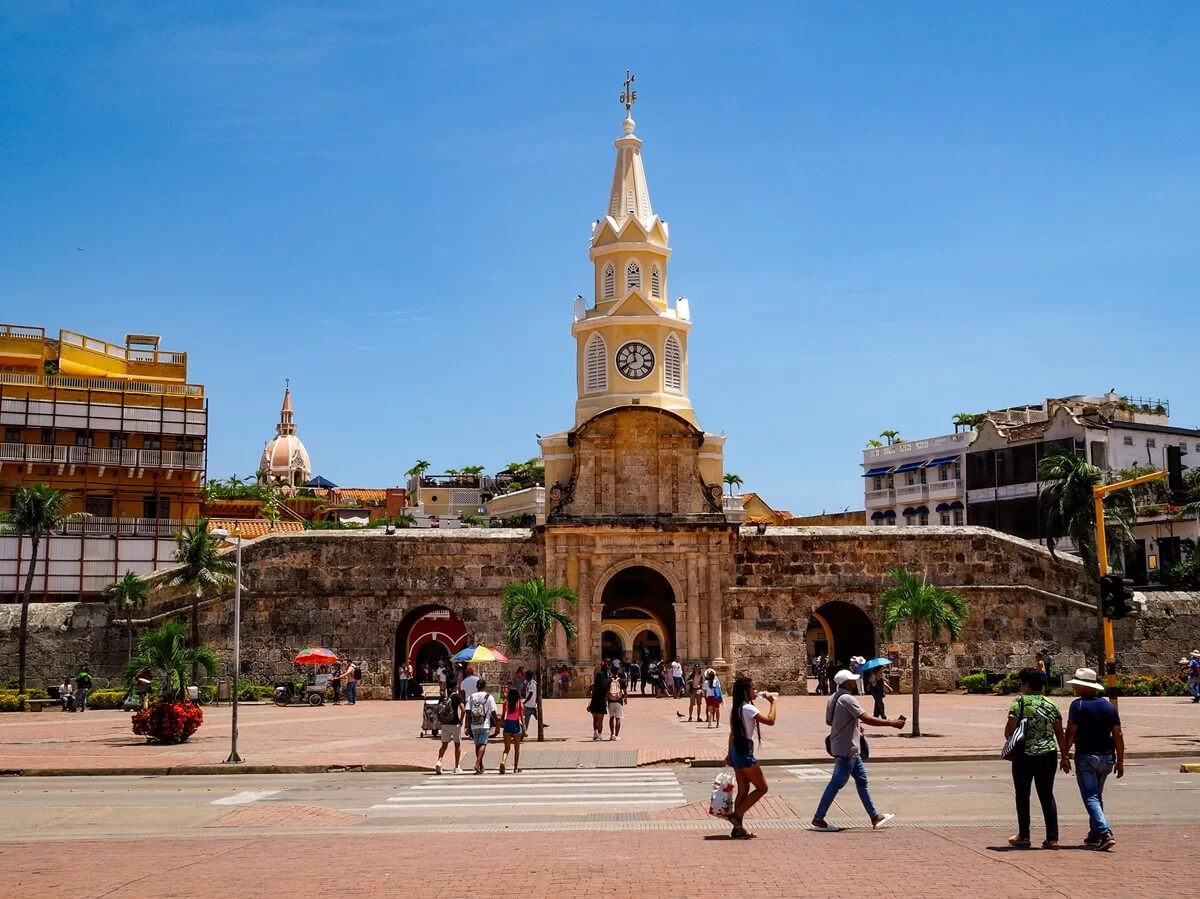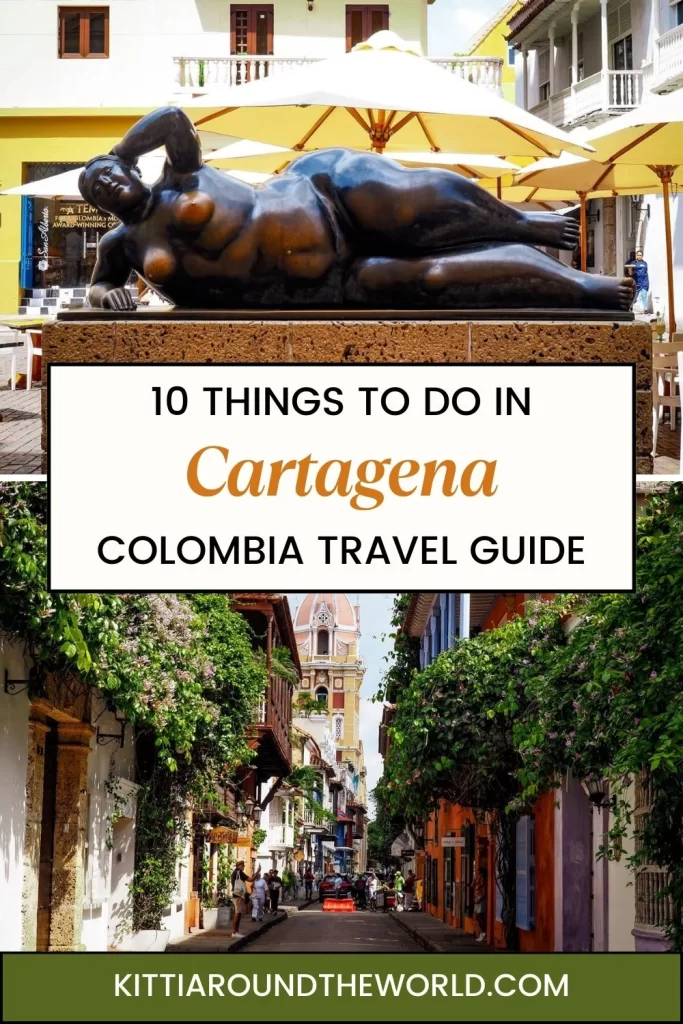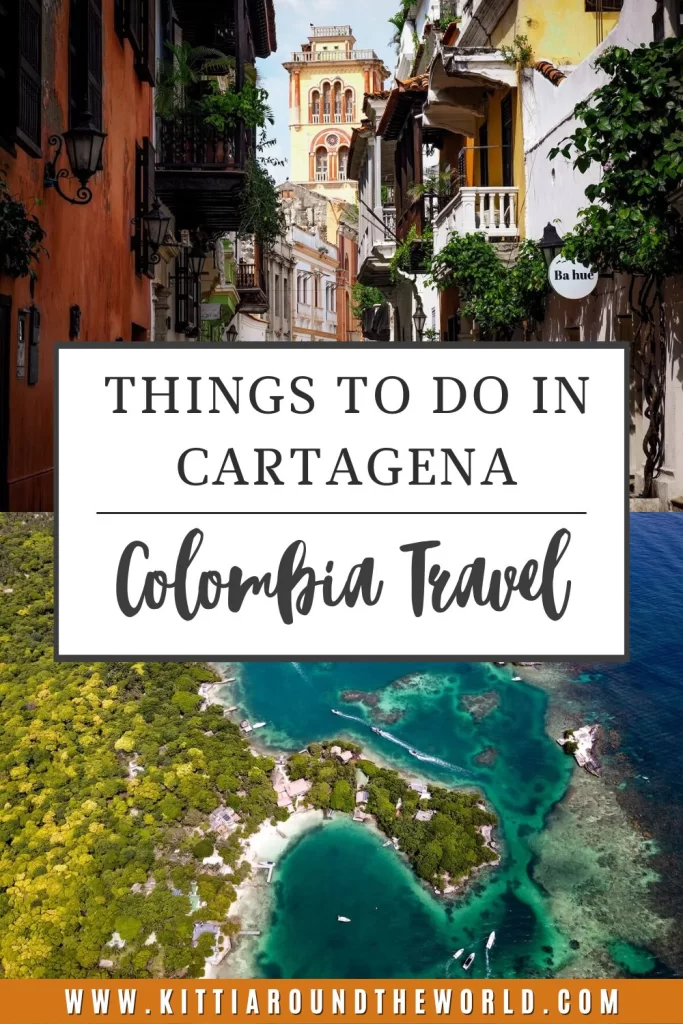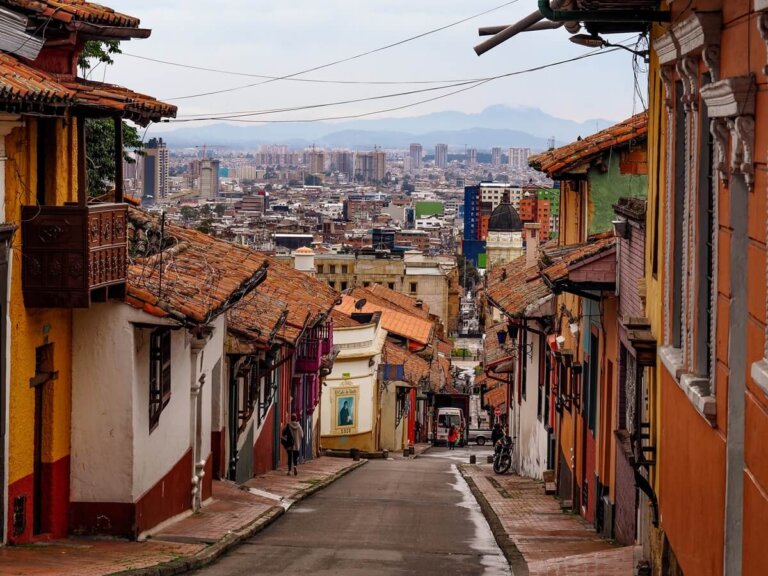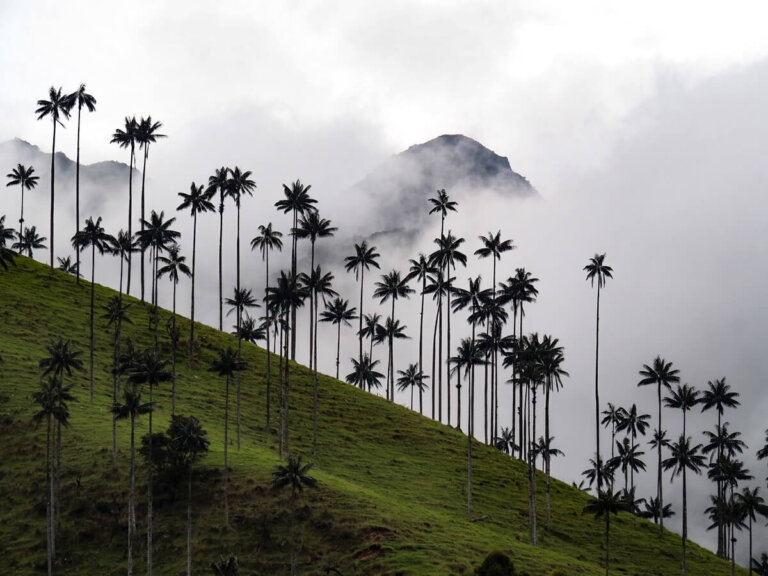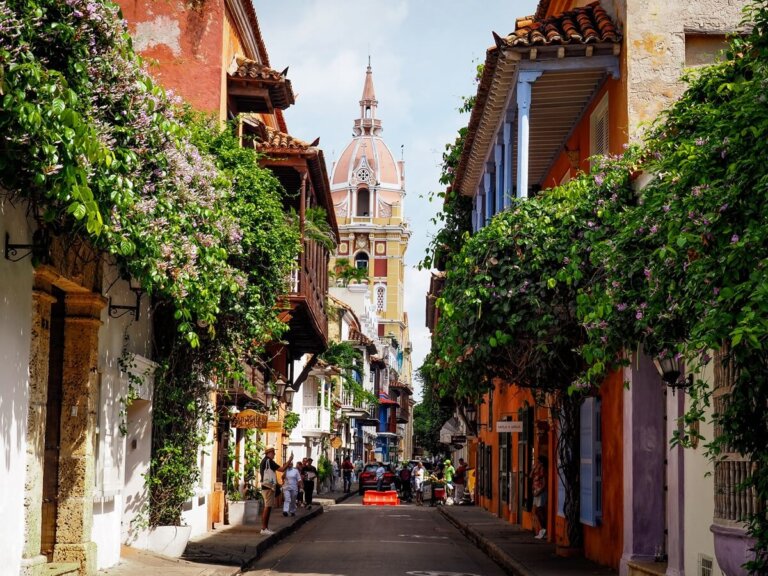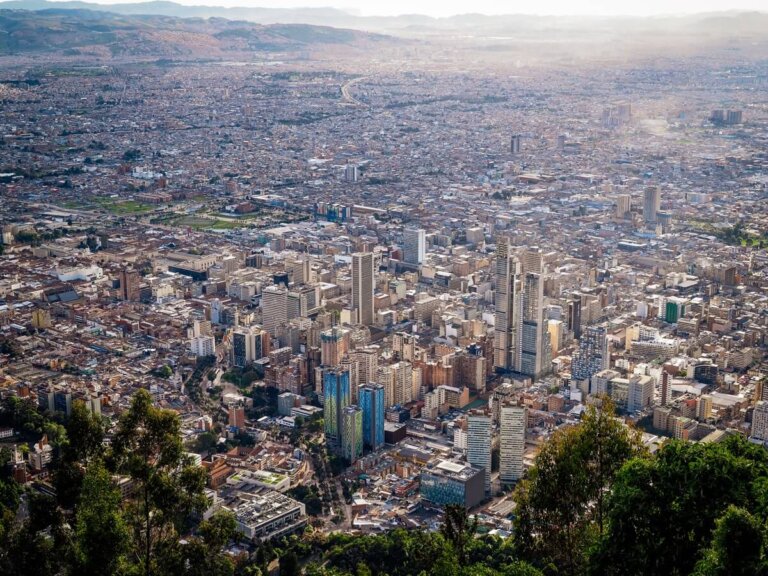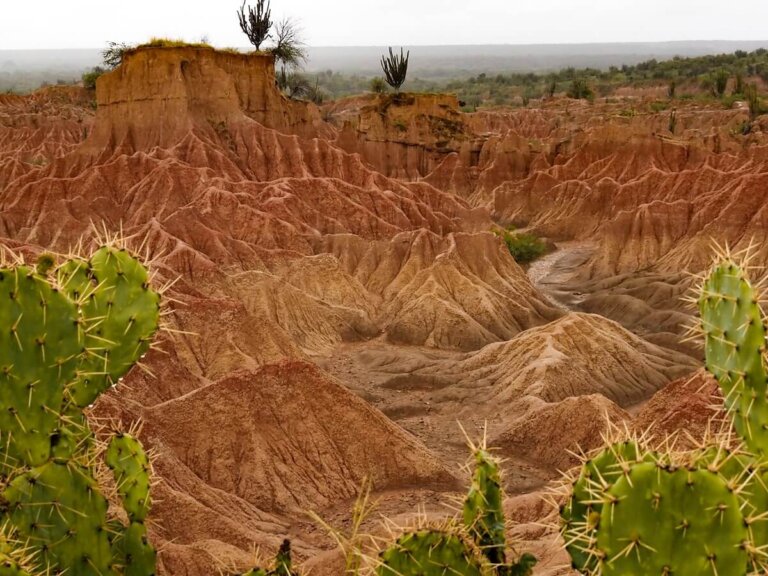10 Things to Do in Cartagena de Indias, Colombia
In this guide we’ll show you all the things you can do in Cartagena de Indias, one of the most visited cities in Colombia. There’s no shortage of historical sights, colourful streets, lively plazas and great beaches to visit when it comes to this Caribbean city.
If you’d like to see what we got up to in Cartagena, then make sure to watch our dedicated Cartagena video on our YouTube channel. For more Colombia videos check out our Colombia Series.
Disclosure: This post may contain affiliate links, which means we may receive a small commission if you click a link and purchase something. Clicking these links won’t cost you anything, but it will help us to keep this site up and running! Learn more about our affiliate policy.
Introducing Cartagena de Indias, Colombia
Located on the Caribbean coast of Colombia, Cartagena de Indias was founded in 1533 by the Spanish commander Pedro De Heredia. Of course, archeological evidence shows that the area was inhabited for thousands of years before the Spanish arrived.
A fire destroyed most of the settlement in the early 1550’s. However, it was quickly rebuilt, this time using stone as building material instead of wood. Cartagena became famous for its abundance of gold, which was stolen from the indigenous people, and was also an important port city.
Due to the city’s strategic location, many countries have tried to invade it over the years. These attacks were the main reason why the city wall was built, which along with much of Cartagena’s architecture, is now considered a UNESCO World Heritage Site. Cartagena was also the home of the Spanish Inquisition and a huge slave market. Millions of slaves entered the port and were sold at the Plaza de los Coches just behind the Clocktower. Many of them escaped the city and formed their own communities known as Palenques. The first official free community was called San Basilio de Palenque and was founded in 1691.
In 1811, the province of Cartagena declared its independence from Spain. However, it was only after another decade of sieges and battles that Cartagena de Indias was liberated in 1821.
Our Top Travel Resources to Visit Cartagena
- 🛏️ Find your accommodations with Booking.com
- 🎫 Book an organised tour in Cartagena with GetYourGuide or Viator
- 📱Get an eSIM with Airalo to be able to use data
- 🛡️ Don’t forget to buy travel insurance via SafetyWing
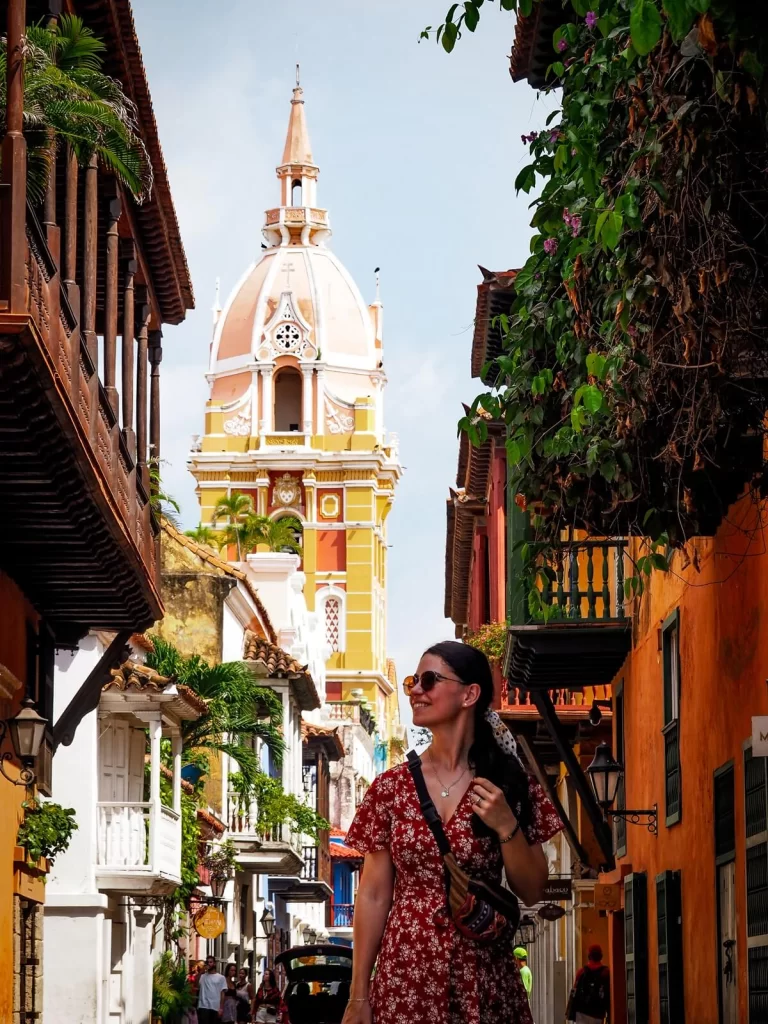

10 Things to Do in Cartagena de Indias
1. Wander the Streets of the Old City of Cartagena (El Centro)
On top of any list of things to do in Cartagena de Indias should be to wander around the streets of its historic centre.
The cobblestone streets of El Centro are filled with colourful colonial buildings, beautiful balconies, flowers, churches, sculptures and street vendors. If you love photography, then you’ll have a field day in El Centro. Be ready for a postcard perfect snap every time you turn a new corner.
Some of the streets you definitely want to walk down are Calle del Candilejo, Calle 36, Calle de la Iglesia, and Calle 35.
Top Tip. For a quieter and cooler experience, start wandering around early in the morning before most tourists hit the streets and the temperature starts to increase.
If you’d like to learn more about the walled city then check out this organised walking tour that includes entry to San Pedro Claver church and the Inquisition Palace.
If you don’t fancy exploring Cartagena’s highlights on foot, why not join a bike tour instead. There are short bike tours that show you the main highlights within the walled city and the neighbourhood of Getsemani.

2. Visit the Plaza’s of Cartagena’s Historic Centre
On top of the picturesque streets, the walled city also has quite a few squares that you should visit.
Clock Tower and Plaza de los Coches
The main entrance to the walled city is through the iconic Clock Tower Gate (Monumento Torre del Reloj). During the colonial period, El Centro was connected to Getsemani via a drawbridge over a moat. The first gate was built here in 1631 before being rebuilt again later. The clock tower wasn’t added until the early 18th century.
Once you walk through the gate, you’ll arrive to a small square called Plaza de los Coches. In the colonial era, it was a hub for social and cultural activities such as bullfights. It was also used as a slave market.
Today, you’ll see plenty of street vendors, shops and cafes here as well as a statue of Pedro de Heredia, the city’s founder.
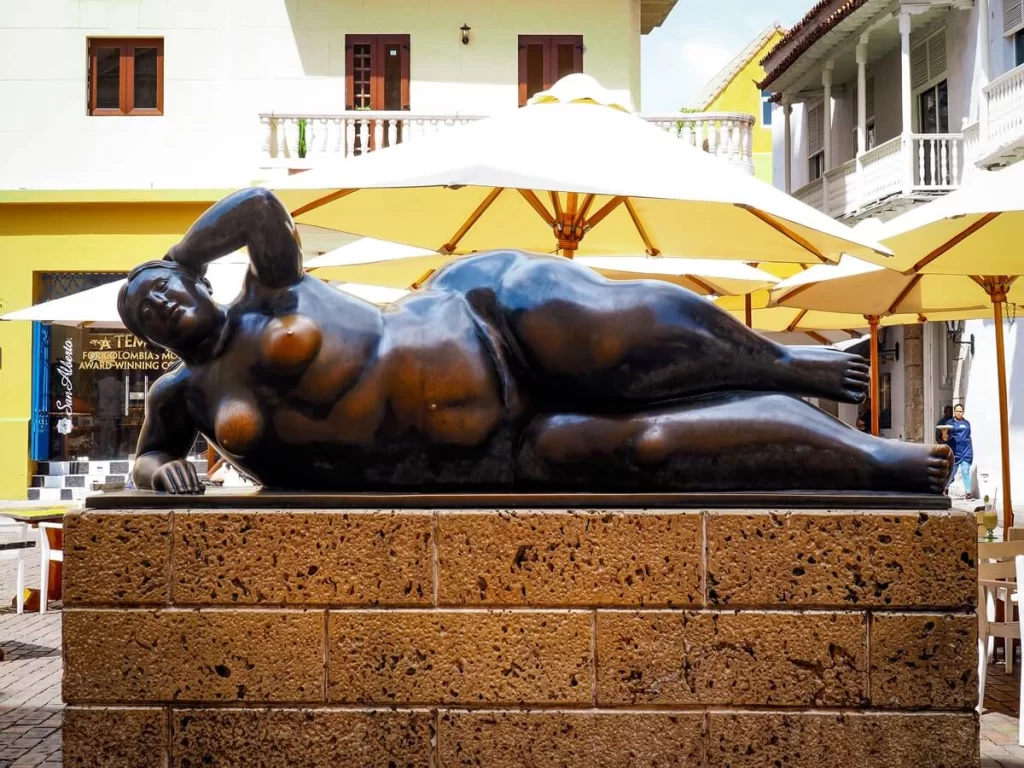
Plaza Santo Domingo
Located in the heart of El Centro, Plaza Santo Domingo is one of the most popular squares in Cartagena. It gets its name from the Santo Domingo Church located on the corner of the lively plaza.
The square also features one of Fernando Botero’s many sculptures, La Gorda Gertrudis. If you haven’t heard of him before, he is Colombia’s most internationally famous artist. Born in Medellin, the figurative artist and sculptor has a signature style called ‘Boterismo’. His work depicts people and animals in large volumes, which can sometimes represent political criticism or humor. Apparently, you’ll get good luck if you give this sculpture’s breast a rub.
Plaza de Bolivar
This leafy square has changed its name a few times over the years. It was first called Plaza de la Catedral, and then Plaza de la Inquisición until the statue of Simón Bolívar was placed in the middle of it.
There are some significant buildings surrounding the square such as the Palace of the Inquisition, which houses the Museum of Cartagena, the Cathedral of Santa Catalina, and the Gold Museum.
If you enjoy shopping, then you can also browse the many emerald shops for some jewellery, as well as other souvenirs shops and independent boutiques.

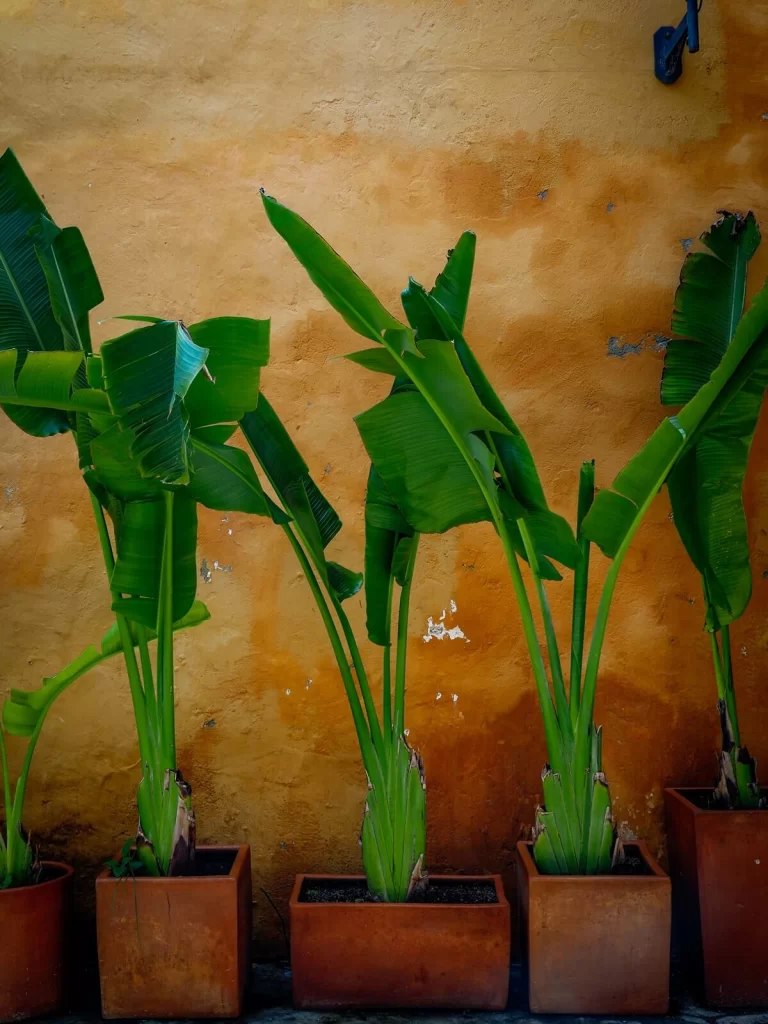
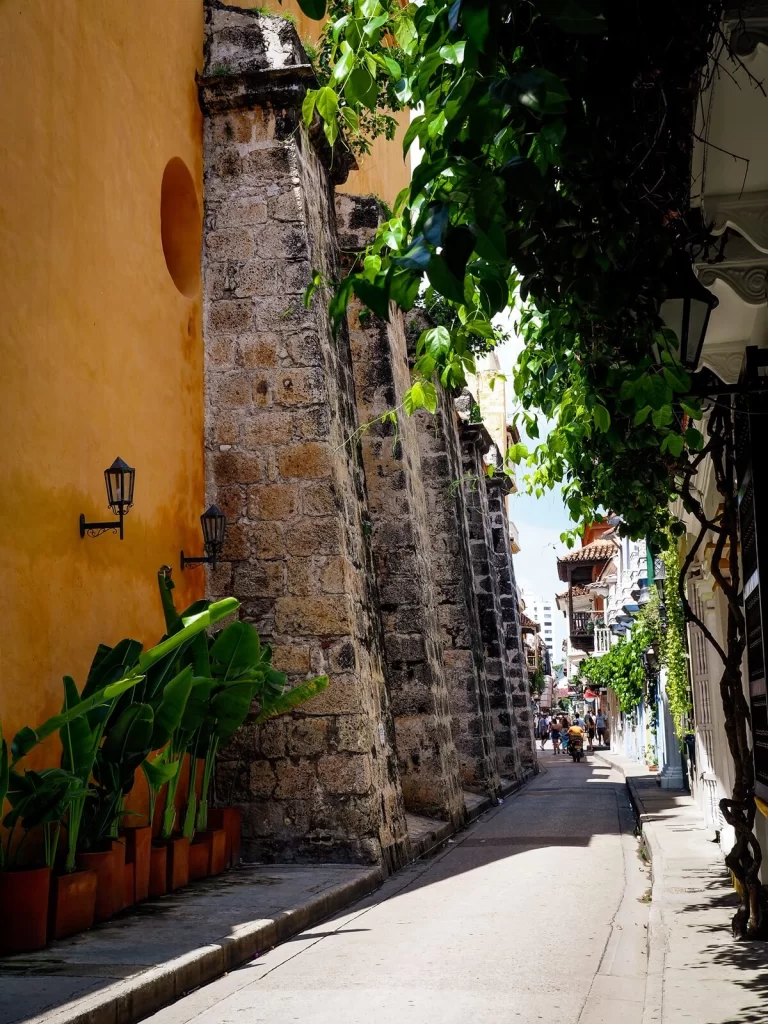
3. Walk the Walls of Cartagena
Cartagena’s old town is surrounded by 11 kilometres of stone walls that are complemented by fortifications and bastions. The walls were built to defend the city because it had suffered many attacks. It took about 200 years to complete the entire structure, including the Castle of San Felipe and the underwater breakwaters.
Today, they are considered some of the best preserved fortifications on the continent. The more than 400 year old walls also make up a part of the UNESCO World Heritage Site that comprises the historic centre of Cartagena, attracting visitors from all over the world.
You can climb up and walk along some sections of the wall. It is an especially popular activity in the evenings, when a lot of locals and tourists gather here to witness a beautiful Caribbean sunset.

4. Take a Tour through History in the Museums of Cartagena
When the heat and humidity get a bit much, consider visiting some of Cartagena’s museums within El Centro.
Located in Plaza Bolivar is the Palace of the Inquisition (Museum of Cartagena de Indias), where you can learn about the history of the Spanish Inquisition. The entry fee is 23,000 COP ($6 USD). Note that there aren’t a lot of English translations though, so come prepared with the Google Translate app on your phone unless you speak Spanish.
If you didn’t have time to visit the huge Gold Museum in Bogota, then definitely don’t miss a visit to Museo del Oro Zenu in Cartagena. It’s free to enter, and even though it’s way smaller than the one in the capital, it still houses a large collection of gold.
If you’re interested in the naval history of Colombia then head over to the Naval Museum (Museo Naval del Caribe). The entry fee is 21,000 COP ($5 USD). Again, there aren’t any English translations, so download the Google Translate app before your visit unless you speak Spanish.
You can also visit the Modern Art Museum (Museo de Arte Moderno Cartagena). It houses a collection of paintings, sculptures and other artwork from both local and international artists. The entry fee is 10,000 COP ($2.50 USD).
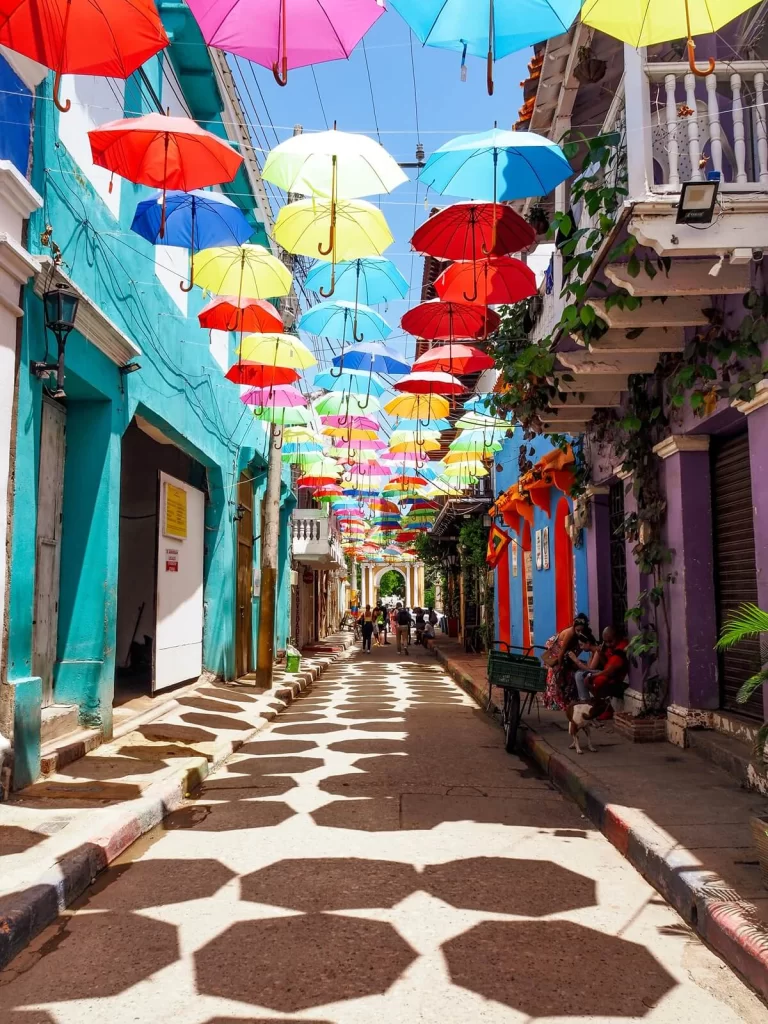
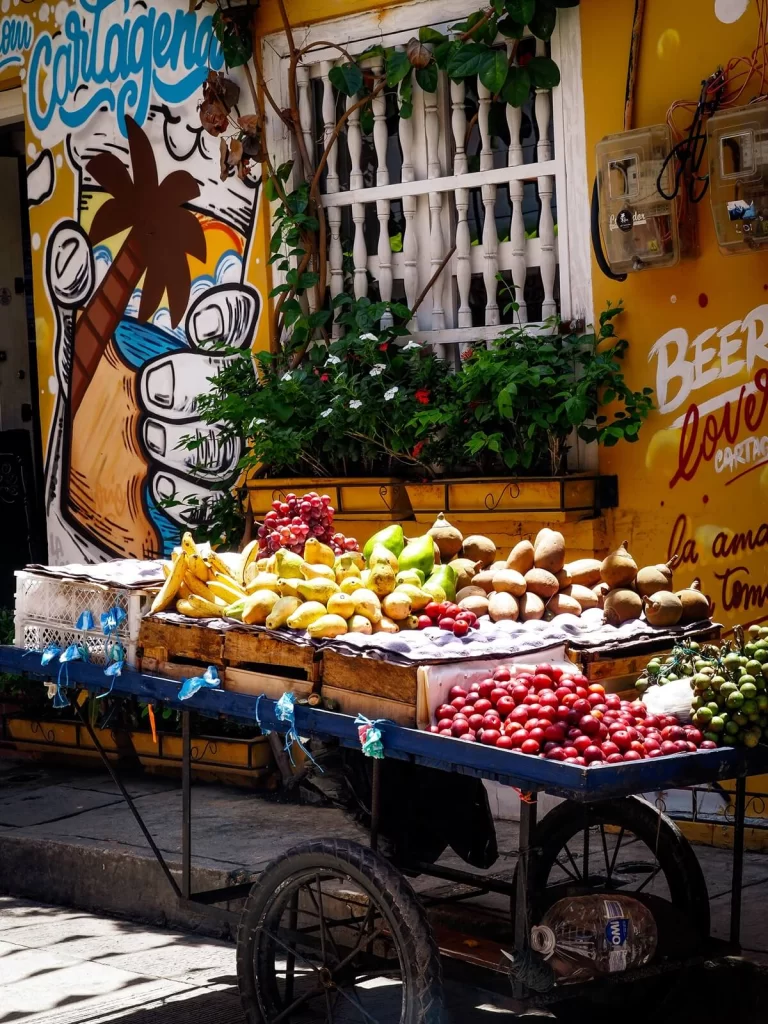
5. Get Lost in the Streets of Getsemani
The neighbourhood of Getsemani is the hipster, artsy district of Cartagena, and is filled with narrow streets and colourful buildings decorated with banners and umbrellas. Most of the walls are also adorned with meaningful street art and murals.
Whilst today Getsemani is a must visit barrio, this wasn’t always the case. In the past, the elite lived within the walled city and a large number of people, including slaves, lived in outlying neighbourhoods like Getsemani. For a long time it was an area best avoided, especially after dark. However, in recent years Getsemani has undergone a huge transformation. As part of the change, many buildings were turned into boutique hotels, cafes and restaurants. Today, it’s one of the liveliest and most visited areas in Cartagena.
The best way to explore Getsemani is on foot. You can freely wander through its umbrella lined cobblestone streets, stop at any one of the cafes or restaurants, and buy some fruit from or take photos with one of the palenqueras (the ladies who wear vibrant dresses and carry bowls of tropical fruit on their heads).
The heart of Getsemani is the lively Plaza de la Trinidad. During the day you can check out the 17th century church, and enjoy people watching whilst munching on some delicious street food. Later in the evening, the square becomes even more vibrant, with street performances enjoyed by both locals and tourists alike.
If you’d like to learn a bit more about the history of Getsemani, then consider joining a walking tour.
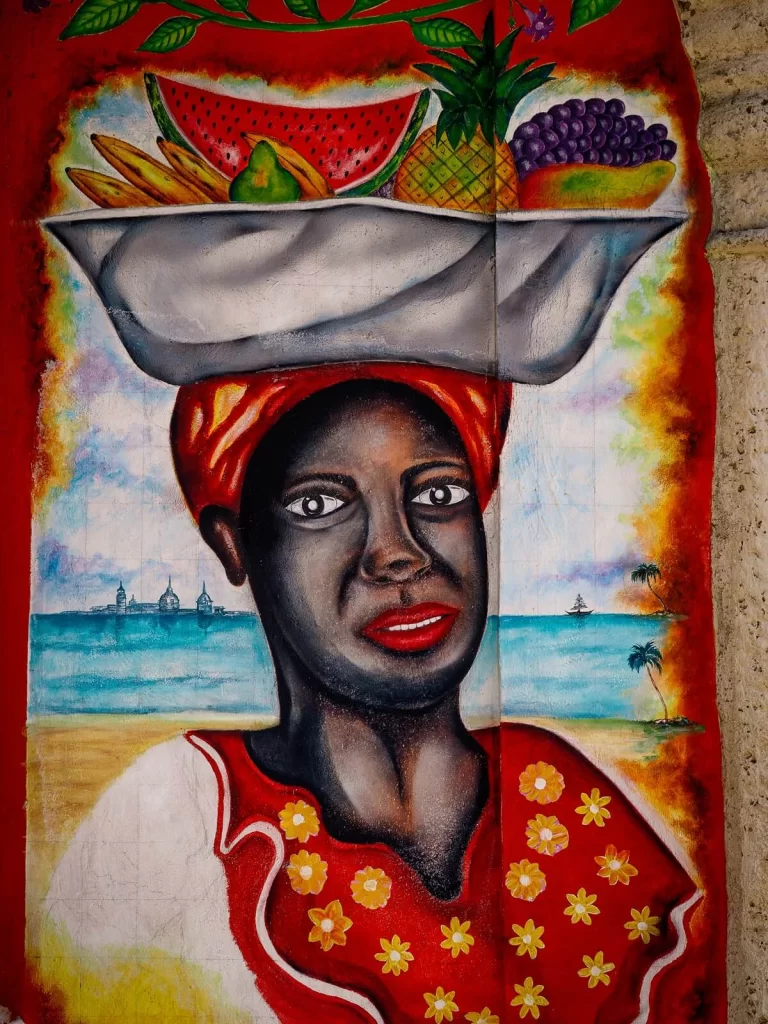

6. Admire Cartagena’s Street Art and Murals
Another reason to visit Getsemani is its incredible street art scene. Many walls in big cities across Colombia, such as Bogota and Medellin, are adorned with meaningful murals. Cartagena is no exception.
These murals definitely helped transform Getsemani into a much safer and more attractive neighbourhood. Both local and international artists have painted the walls of this barrio. But their artwork isn’t purely an expression of their creativity. Many of the pieces you’ll see show the history of this neighbourhood and have deeper messages to tell visitors.
Some of the best street art is located along Calle 29 (or Calle de la Sierpe), Calle de San Juan and in Plaza de la Trinidad.
Whilst you can explore the streets on your own, if you want to learn more about the meaning behind the murals then we recommend joining an organised street art tour.
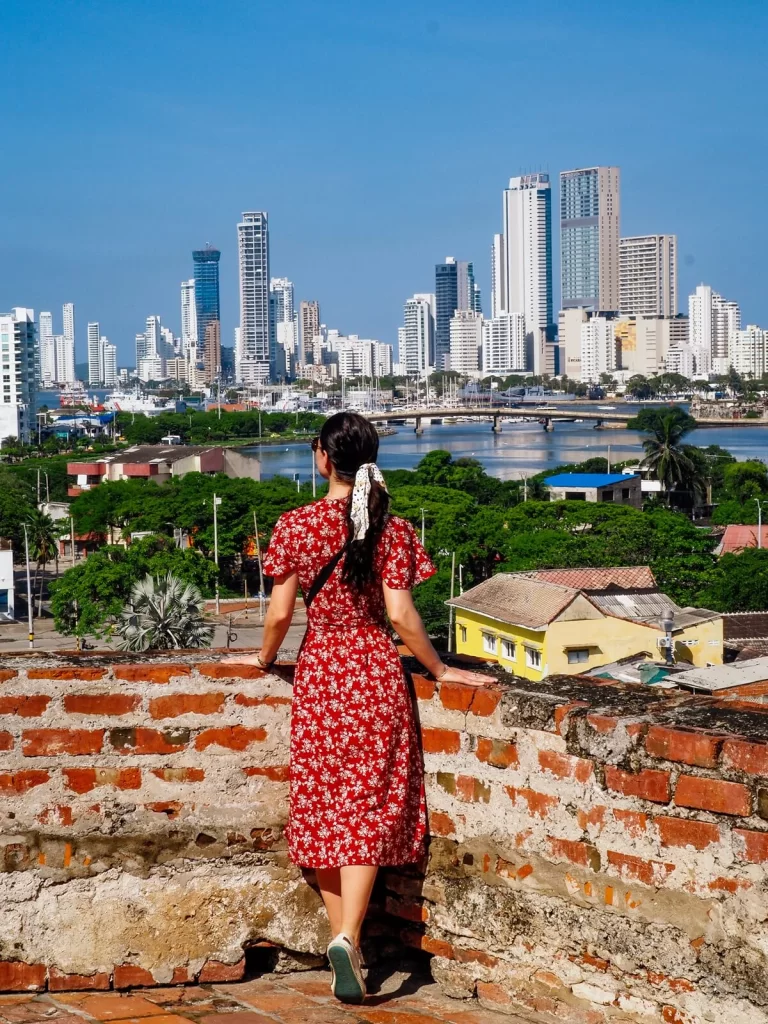
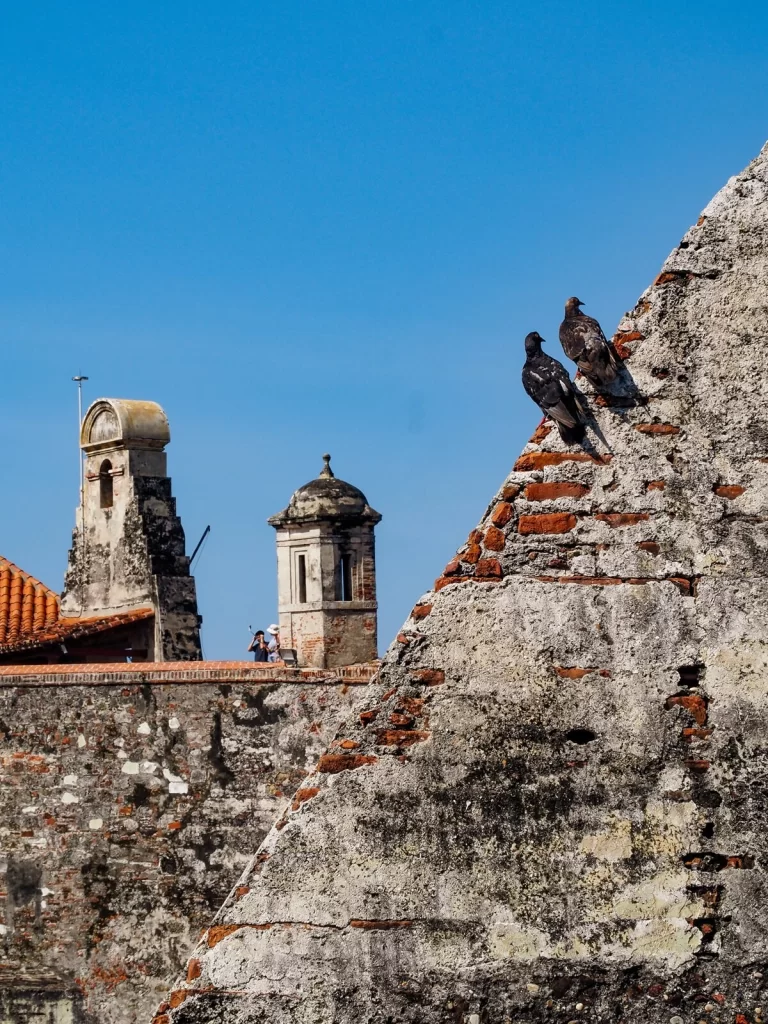
7. Explore the Castillo de San Felipe de Barajas
Located just outside Getsemani, on a hill called San Lázaro, is the San Felipe de Barajas Fort (Castillo San Felipe de Barajas). It is one of the most visited attractions in Cartagena.
The fort was built in 1657, during the Spanish colonial era, as a way of providing protection against constant attacks on the city. Since 1984, it has also been part of a UNESCO World Heritage Site that includes the historic centre of Cartagena. The best part of a visit is the incredible views you get from the fort.
Entry fee is 30,000 COP ($8 USD) per adult. There aren’t an awful lot of information boards, so if you want to learn more about the fort, we recommend hiring a guide for an additional cost.
Top Tip. There’s no shade within the fort, so we highly recommend visiting either first thing in the morning or later in the afternoon. Also, make sure to wear plenty of sun protection and have enough water with you!
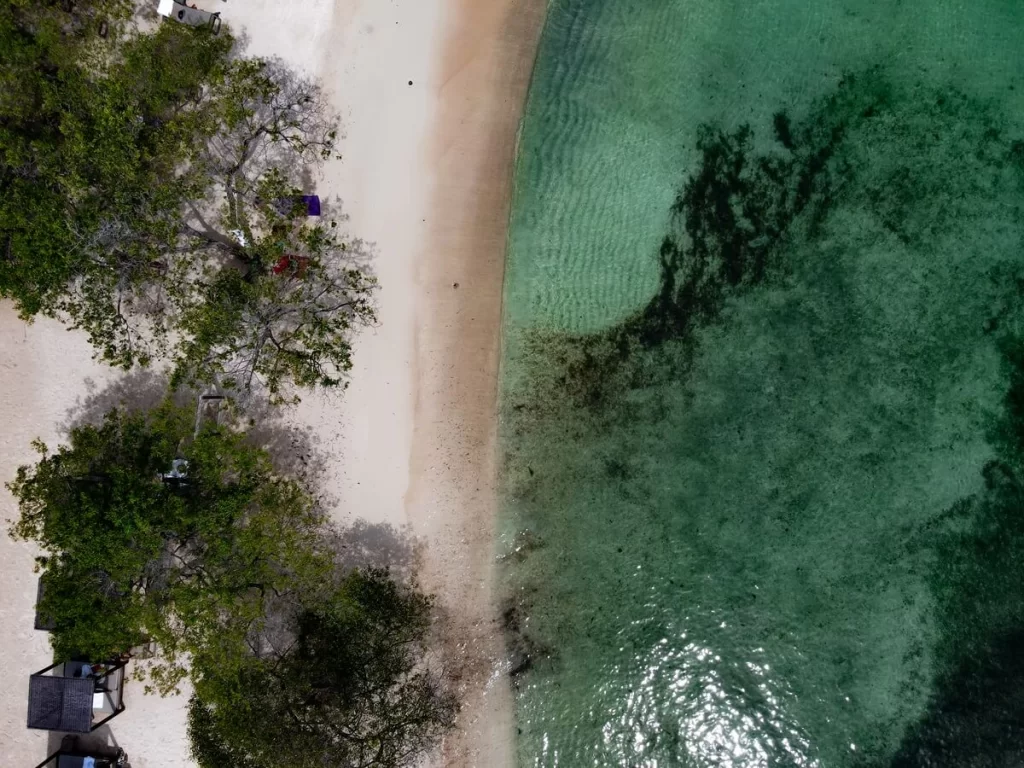
8. Take a Day Trip to Isla Barú and Playa Blanca
When people visit Cartagena, they often don’t realise that there aren’t actually that many beaches within the city. Most of the sandy, Caribbean beaches are located quite a distance away from the bustling city. These places are often visited as part of a day or overnight trip.
One of the most popular day trips from Cartagena is to Isla Barú. Despite the name, Isla Barú isn’t actually an island. It’s a peninsula, which means that you can access it by road from Cartagena.
How to get to Playa Blanca from Cartagena. If you just want to relax on the beach for a day, you can book a ferry or shuttle from Cartagena. The ferry normally departs from Muelle de la Bodeguita, just a few minutes’ walk from the Clocktower Gate. You can also take a taxi to the beach from the city. Alternatively, you can also just join an organised day trip to Playa Blanca.
Note. Playa Blanca has become very popular over the years and the beach can be pretty crowded. There are also many vendors selling all sorts of things, from food to massages. Since we weren’t in Cartagena for long, we decided to take a day trip to the Rosario Islands instead, for a quieter beach experience.
Top Tip. If you’re in Cartagena for longer, we recommend spending a night on Baru Island. This way you can enjoy the more peaceful evenings and mornings before the majority of day-trippers and vendors arrive.
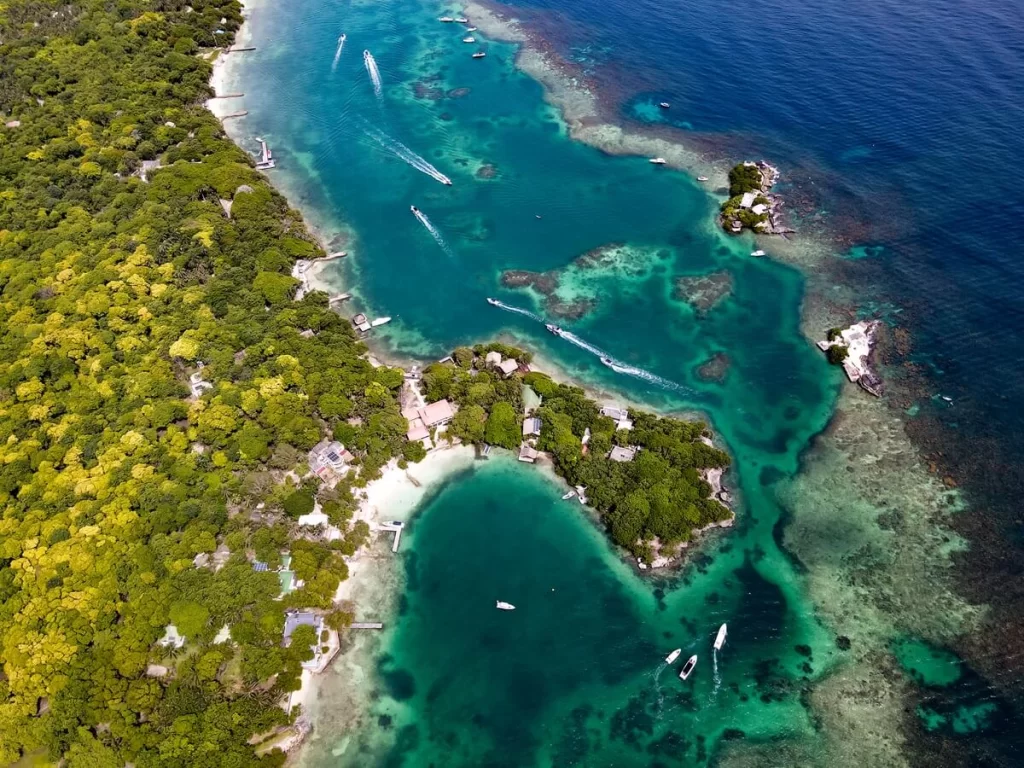
9. Relax on the Rosario Islands
Located an hours boat ride away from Cartagena, the Rosario Islands form an archipelago along the Caribbean coastline. This group of 28 islands are a mix of public and private land. The Rosario Islands have been declared a national park since 1988, to protect the coral reefs surrounding them.
How to visit the Rosario Islands from Cartagena. Isla Grande is the largest island that most tourists will visit or use as a base for additional excursions. To get there you can book a day pass with one of the resorts, who take you to the island and allow you access to their facilities for the day. Boats leave early from Muelle de la Bodeguita, just a few minutes’ walk from the Clocktower Gate. Alternatively, you can go on a boat tour that involves more water activities but may not let you land on any of the islands.
If you’re spending longer in Cartagena and are after a more relaxing experience, then you can even spend a night or more at one of the hotels on the island.
Note. You’ll have to pay the port fees separately in cash before you board your boat. This is an additional 20,000 COP ($5USD) per person.
Top Tip. If you don’t want to skip a visit to Barú Island during your stay in Cartagena, then you can sign up for this boat tour that also includes a stop there.

10. Soak up the Caribbean Sunsets
The best way to end most of your days in Cartagena is to watch the incredible Caribbean sunsets. There are many lovely locations you can do this from.
A lot of people go up to the famous bar called Cafe del Mar, which provides a nice spot along the city walls. This comes with a hefty price-tag though and a pretty crowded experience, as one too many people want to be there!
If you’re on a budget or want a more relaxed evening, then just head up to another spot on the wall where a mix of tourists and locals will join you to watch the sunset. Alternatively, you can also walk along the waterfront of the Manga neighbourhood (Calle 24), to enjoy the sunset overlooking the skyscrapers of Cartagena.
For a slightly different experience you can join a sunset cruise departing from the city.
Lastly, if you’re staying in Cartagena for a bit longer, you can consider spending a night either on Isla Baru or the Rosario Islands to witness the Caribbean sunset from the beach.
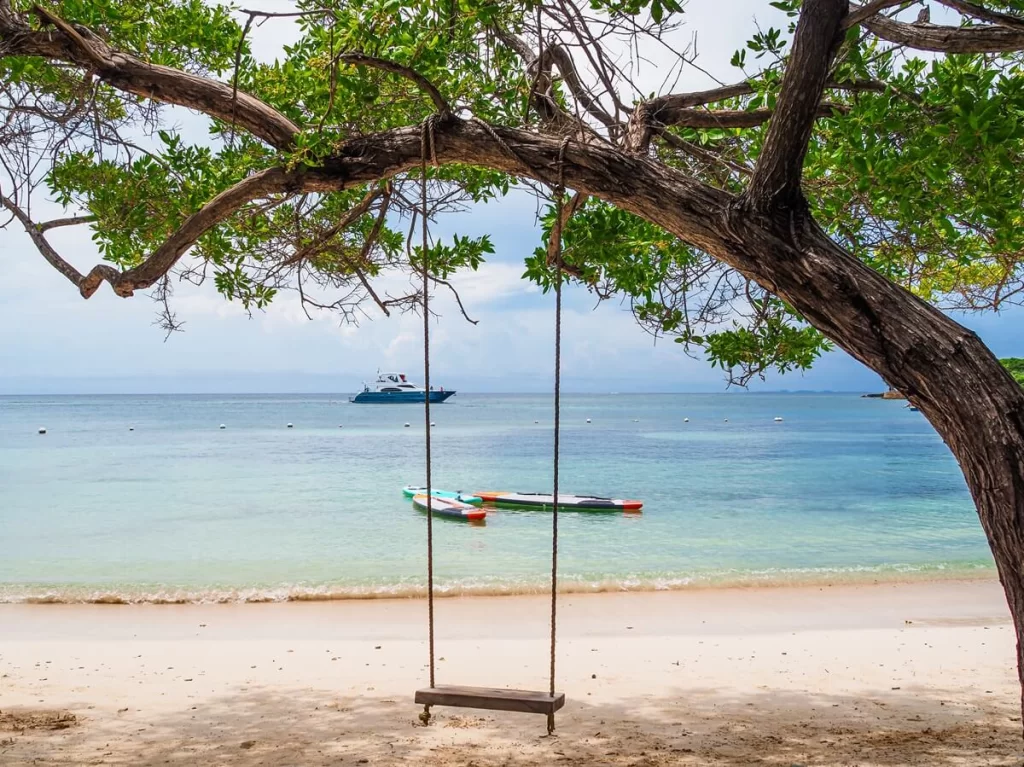
How Long Do You Need in Cartagena, Colombia
Depending on the purpose of your visit, we generally recommend spending a minimum of 3 days in Cartagena. As you can see, there is plenty to do in the city, whether it be something more active or relaxing. 3 days would allow you to walk around its historic centre, visit a few museums, explore the Getsemani neighbourhood and take a day trip to either Baru Island or the Rosario Islands.
If you have longer, then you can spend a few nights on Isla Baru or the Rosario Islands for a proper beachy holiday.
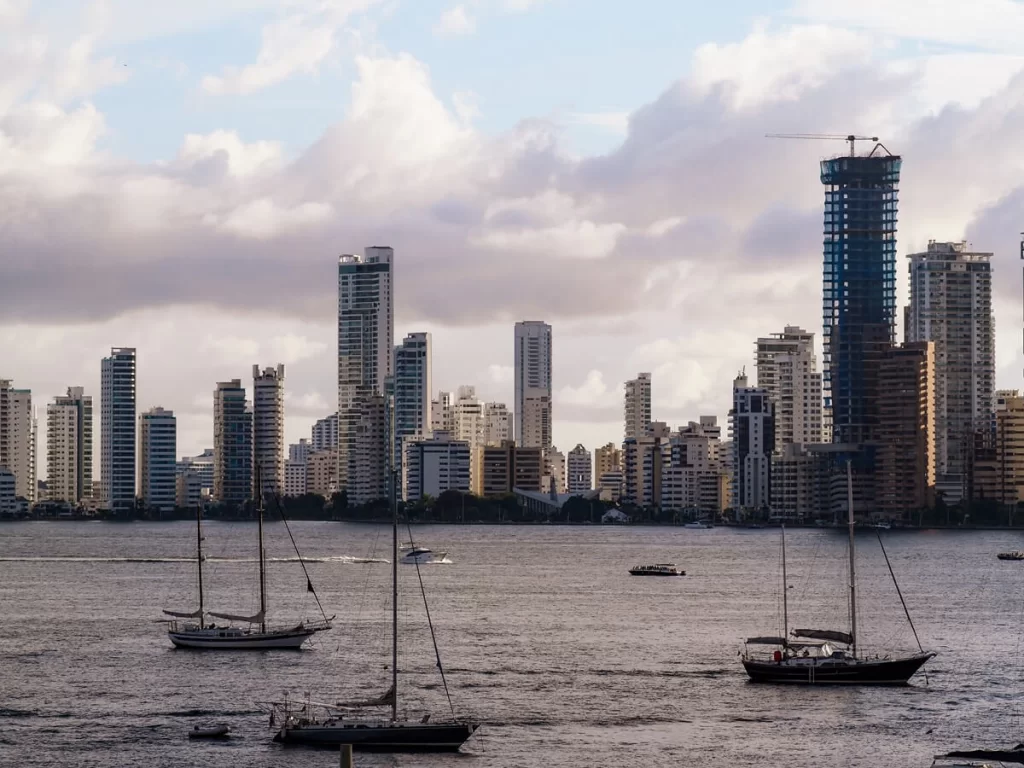
Where to Stay in Cartagena, Colombia
Being a very popular place to visit in Colombia, Cartagena offers a wide variety of accommodation options to its visitors.
If you’d like to be close to everything, then we recommend booking your stay within the Historic Centre. You’ll be minutes from all the most important attractions, restaurants, cafes and bars.
Alternatively, you can also consider Getsemani, since it’s still only a short walking distance to all the main points of interest.
If you’re after a quieter stay, or you’re spending a bit longer than 3 days in Cartagena, then you could consider the quieter residential neighbourhood of Manga.


Where to Eat in Cartagena
As well as a large volume of accommodation options, there’s also no shortage of places to eat in Cartagena either. Below are some of our favourite places for either a full meal, a lunch deal or just a refreshing drink:
- Época Café Bar. (Nice coffee and lunch spot in the Historic Centre).
- Juan Valdez. (Basically the Starbucks of Colombia. Whilst it is a chain, we definitely enjoyed popping in here for a quick coffee and some pastries).
- Goyurt. (A great ice cream shop within the Historic Centre)
- Di Silvio Trattoria. (A huge Italian restaurant in Getsemani with a great selection of food and a nice atmosphere).
- Lunático. (Another lovely spot in Getsemani with a great view of San Felipe de Barajas Fort).
- Verona Pizzería Gourmet. (Located in the Manga district, it has some nice Italian food and very good coconut and hierbabuena (mint) lemonades).
- Atrium Pizza & Burger. (Another good option if you’re in the Manga area of Cartagena).
Do you want to learn more about Colombian cuisine? Then make sure to book a street food tour to have a fantastic gastronomic experience in the city.

How to Get to Cartagena
Depending on where you’re coming from, there are a few options for how to reach Cartagena.
By Plane. The easiest and least time consuming way to reach Cartagena is by flying to Rafael Núñez International Airport (CTG). There are domestic flights between major Colombian cities such as Bogota and Medellin. Depending on where you’re coming from, there are many direct flights between Cartagena and other major cities in North, South, and Central America too, as well as some from Europe. You can check where you can fly direct to Cartagena from on this website.
The airport is relatively close to the centre, so you can either just jump in a taxi or book an airport transfer.
Find Flights to Cartagena✈️
By Bus. The most affordable way to get to Cartagena is by bus. It depends on where you’re coming from, but you can reach Cartagena from places like Santa Marta, Medellin or Bogota. Colombia is huge, so you’re most likely going to need to take an overnight bus if you’re coming from further south.
The main bus terminal (Terminal de Transporte Cartagena) is quite far outside of the city. You can take a local bus from there to the city centre, or opt for a taxi. We recommend the latter if you’re travelling with a lot of luggage or arriving later in the evening.

Is Cartagena Safe? – Top Travel Tips
Cartagena is considered a safe city to visit. However, this doesn’t mean that you shouldn’t stay vigilant when walking around. Below are some of our tips based on research we’ve done and our own experience visiting the city.
- Always keep an eye on your belongings, especially as you walk around the busy historic centre.
- Cartagena is very hot and humid (80-90%!), therefore make sure to always wear SPF and use other forms of sun protection like hats and sunglasses. Don’t forget to drink enough water to stay hydrated because you’ll be sweating a lot.
- Please try to avoid taking a horse carriage ride. The horses didn’t seem to be in great condition, which is no surprise given they are out in the sun and heat all day.
- You can take photos with palenqueras (the ladies who wear vibrant dresses and carry bowls of tropical fruit on their heads). However, you’ll have to pay for the photo. Most of them are nice, but there are some who will come up to you to take photos and ask a really high price.
- There are also young street rappers who might appear out of nowhere and follow you around whilst rapping about your life. They are fun and talented, and we let one group sing for us, but after that we had to be very firm in saying no.
- We also read that vendors on Playa Blanca can be a bit pushy, so make sure to say no to anything you don’t want to pay for.
- Always have travel insurance, which can protect you from any unfortunate events.
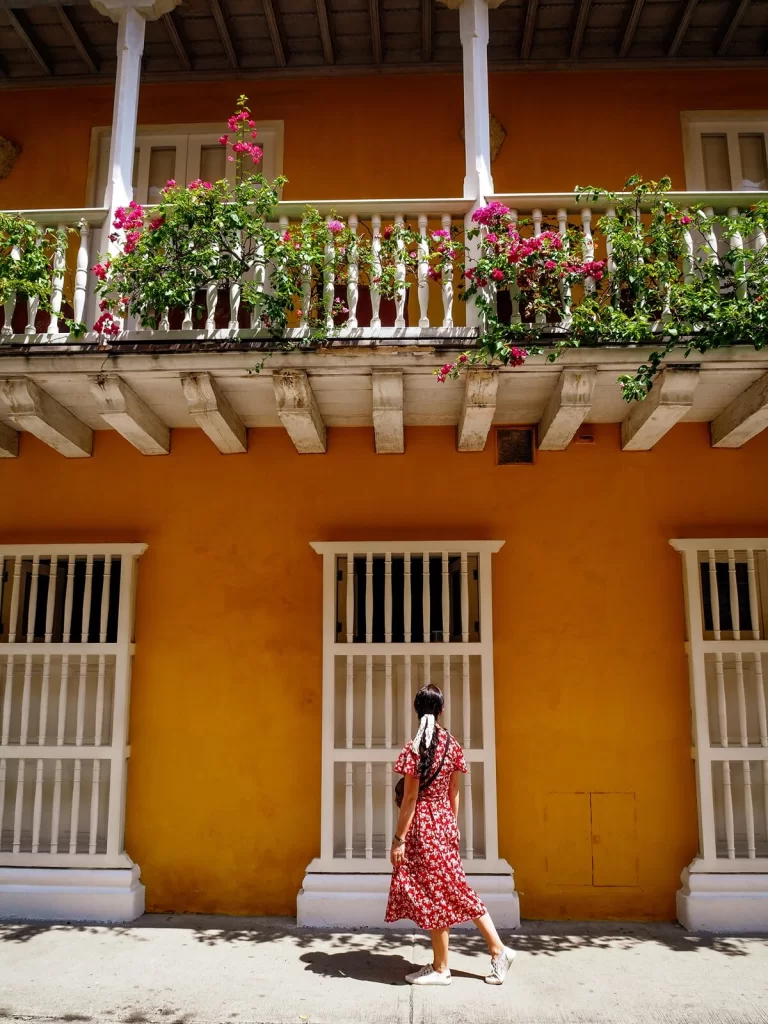

Final Thoughts on Things to Do in Cartagena de Indias
Despite the crazy heat and humidity, we definitely loved our time in Cartagena. From its colourful streets to its important history and stunning nearby beaches, we can see why many people choose Cartagena as their holiday destination. We’ve been to a few Caribbean Islands before and really enjoyed our stay, so we knew that we’d also like Cartagena. Considering we naturally gravitate towards hiking destinations rather than beachy ones, the fact that we enjoyed this city so much is high praise.
Have you ever been to Cartagena before? If so, how much time did you spend there and what was your favourite activity? If not, what would you add to your Cartagena itinerary? Let us know in the comments below.
Now, let your adventure begin,

Our Top Travel Resources
Accommodation: For hotels we always use Booking.com and Hostelworld for hostels. We also book longer stays on Airbnb or Vrbo.
Flights: To find the best flight prices we always check Skyscanner, Google Flights or WayAway. Then we also check the airlines’ websites too for comparison.
Car Rentals: We use Discover Cars when we want to rent a car as it compares local, national and international companies.
Activities: If we book organised tours we always check either GetYourGuide or Viator.
Foreign Currency: Whenever we can we prefer to pay in local currency and for that we always use our Wise card. We can easily withdraw money from the ATM or pay by card at most shops and restaurants.
Travel Insurance: We never go anywhere without travel insurance. You never know what will happen on your trip, so good travel insurance like SafetyWing can protect you in case of injury, illness, theft and cancellations.
eSIM and VPN: To get data abroad we use Airalo which is an app that allows you to download a prepaid eSIM to your phone in over 190 countries. Make sure to have a VPN to avoid hackers accessing your personal data when using public WIFI. We use Surfshark which is the only VPN that offers one account on unlimited devices.

